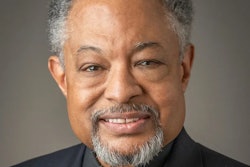Salary. Retirement pensions. Health care benefits. Academic freedom. These are only some of the issues that university administrations and faculty members don’t seem to quite agree on these days. With private colleges governed by the National Labor Relations Act and only one-third of public colleges unionized, faculty and staff at many colleges are finding themselves voiceless.
Those that have unionized are flexing their collective bargaining muscle. For example:
· At the Community College of Philadelphia, about 1,400 faculty and staff participated in a walkout in March after the union accused the administration of offsetting rising health care costs with smaller salary packages. The school’s 37,000 students were left in limbo for nearly two weeks until both sides reached an agreement.
· In late March, the California Faculty Association approved a strike for the first time in its history over a labor dispute with the California State University administration. Although the strike was averted when both parties struck a deal, 94 percent of the 8,129 faculty members who voted were ready to walk off the job.
· The Association of Pennsylvania State College and University Faculties recently authorized a strike, with 96 percent of faculty and 98 percent of coaches approving of the measure. The union’s four-year contract with the Pennsylvania State System of Higher Education, which operates 14 public universities, will expire June 30.
Despite the demonstration of will, education officials say it is highly unusual for faculty members to go on strike. Michael Mauer, the director of organizing and services at the American Association of University Professors, says contracts get settled every year despite the discord and disharmony.
For those disputes that do end in a work stoppage, faculty and administrators generally try to minimize the impact on students.
“Students are affected depending on how long the strike is,” says Mauer. “In California, they decided to have a series of rolling strikes at every campus for two days each so classes would not be affected.”
“Colleges feel it is crucial to maintain a good atmosphere, and [when strikes happen,] some of the faculty members will make adjustments for the students,” says Ada Meloy, the director of legal and regulatory affairs at the American Council on Education.
Jack Nightengale, a spokesman at the American Federation of Teachers, says it’s becoming increasingly difficult for faculty to organize. In 2005, graduate students who worked were restricted from organizing unions since there were still deemed as students.
“When private colleges can’t unionize, and only one-third of public colleges can form unions, there is an obvious need for more representation,” Nightengale says.
Meanwhile, adds Mauer, legal obstacles to organizing at private colleges are more challenging. In the July-August 2006 issue of AAUP’s Academe magazine, Mauer wrote that since 1980 — when the Supreme Court ruled that the faculty at Yeshiva University were “managers” and therefore not entitled to collective bargaining — the National Labor Relations Act’s coverage of full-time faculty in private colleges and universities has become almost invisible.
“Legal barriers to unionizing were raised even higher by decisions that drew on the precedent set by the 1979 Supreme Court decision in National Labor Relations Board v. Catholic Bishop of Chicago, which said that the act does not apply to large numbers of employees at religiously affiliated institutions,” Mauer wrote.
Meanwhile, the Community College of Philadelphia strike has been settled as has the dispute between CFA and CSU administration. In Pennsylvania, state higher ed system leaders and the faculty union in its most recent meeting last week discussed salary issues and health care, among other things. A system official said the initial offer was zero percent general raises for all four years and annual step increases associated with movement up the salary schedule of 1.5 percent or 3 percent. Faculty base salaries range from $40,600 for an entry-level instructor to $97,767 for a veteran full professor.
— The Associated Press contributed to this report
There are currently 0 comments on this story.
Click here to post a comment.
© Copyright 2005 by DiverseEducation.com





















